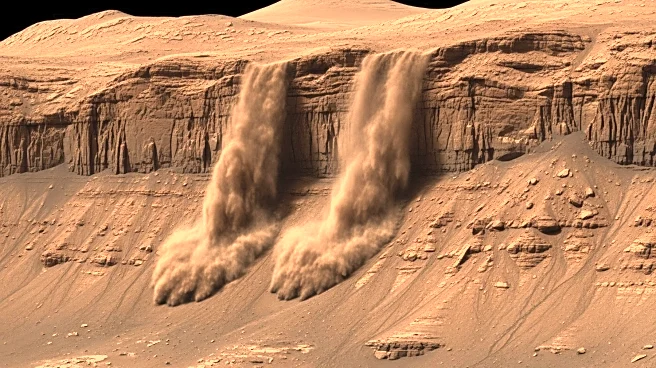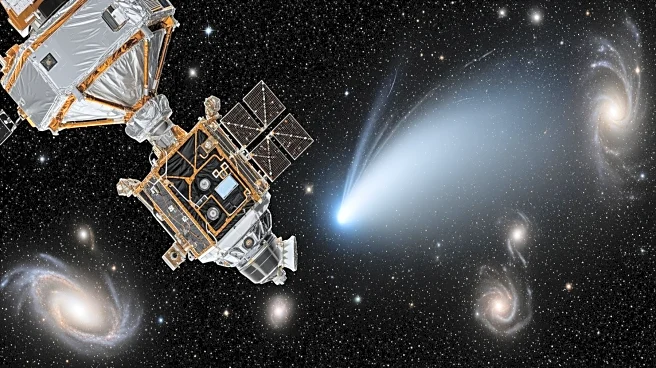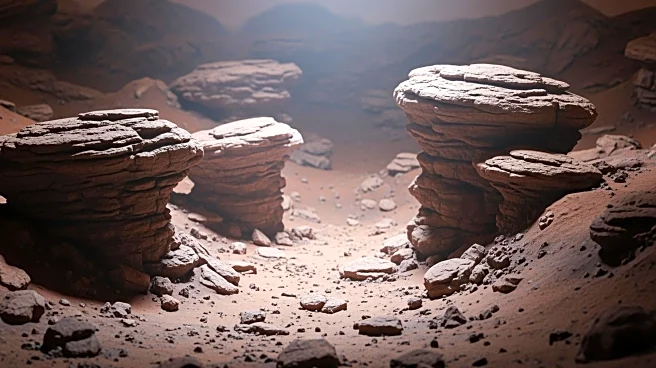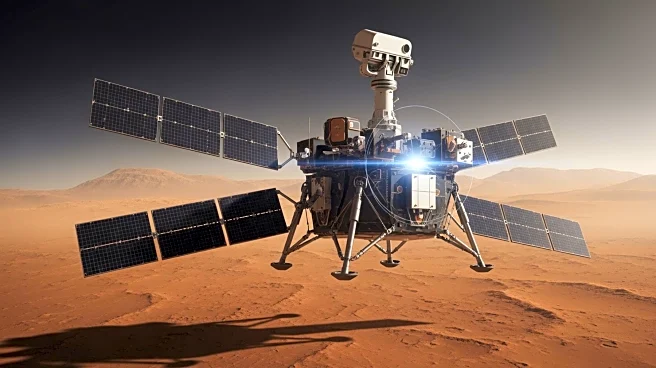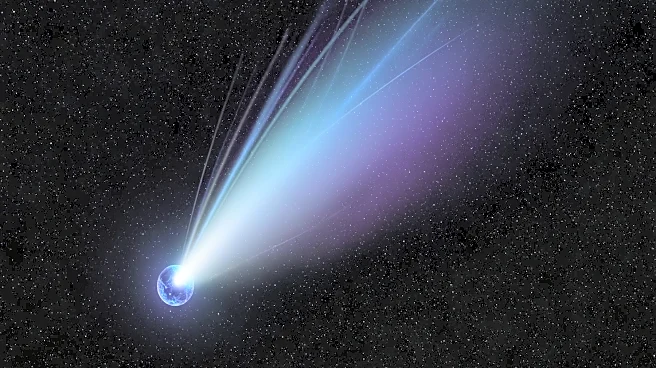What's Happening?
The European Space Agency's ExoMars Trace Gas Orbiter has captured images of dust avalanches on Mars, specifically on the slopes of Apollinaris Mons. These avalanches were triggered by a meteoroid impact,
which carved numerous streaks on the Martian surface. The images, taken by the Colour and Stereo Surface Imaging System (CaSSIS), show impact craters and streak formations that occurred between 2013 and 2017. Scientists have determined that these streaks are primarily formed by dry processes driven by wind and dust activity, rather than water. A study published in Nature Communications highlights that meteoroid impacts are rare causes of these streaks, with seasonal changes being the predominant factor.
Why It's Important?
This discovery is significant as it enhances the understanding of Martian surface dynamics and the role of environmental factors such as dust and wind. The findings suggest that Mars experiences dynamic seasonal changes, which could inform future exploration missions. Understanding these processes is crucial for assessing Mars' past habitability and the potential for life. The ExoMars Trace Gas Orbiter's ongoing mission to map atmospheric gases and surface water locations is vital for future research and exploration, potentially aiding in the search for life and the history of water on Mars.
What's Next?
The ExoMars Trace Gas Orbiter will continue to provide high-resolution images and data to further understand Mars' surface and atmospheric conditions. Future missions may focus on obtaining long-term, continuous observations to reveal more about Mars' dynamic environment. These efforts are part of ESA's broader objective to explore Mars' ancient past and assess its habitability, which could lead to new discoveries about the planet's history and potential for life.
Beyond the Headlines
The study of Martian dust avalanches also raises questions about the planet's geological activity and the potential for seismic events. While meteoroid impacts are rare, understanding their effects on the Martian surface could provide insights into the planet's geological history. Additionally, the use of deep learning algorithms to analyze Martian images represents a significant advancement in space exploration technology, offering new methods for studying planetary surfaces.


